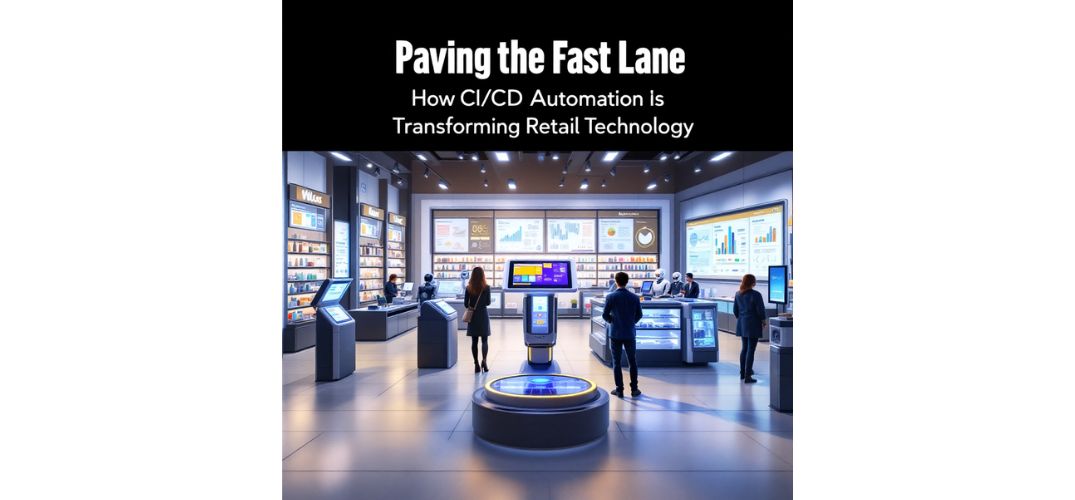A seasoned technology leader, Jithendra Prasad Reddy Baswareddy offers a compelling look into how enterprise-scale automation is reshaping retail. With deep expertise in engineering solutions, he illustrates the evolution of digital transformation strategies. This article explores how modern CI/CD practices drive operational speed, quality, and innovation. Readers will discover insights into automating software delivery at scale.
Rewriting the Rules of Retail Agility
Retailers face an urgent mandate to evolve digitally or fall behind. With online channels rapidly overtaking traditional sales avenues, the need for agility has never been greater. However, legacy infrastructure and outdated processes continue to choke innovation. To navigate these complexities, enterprises are embracing Continuous Integration/Continuous Delivery (CI/CD) automation, not just as a technical upgrade but as a foundational shift.
The transformation from quarterly releases to near-daily deployments requires more than new tools—it demands cultural and structural change. Retailers that implement CI/CD pipelines report significant gains in development velocity, feature delivery, and customer satisfaction, while reducing deployment risks. This rapid adaptability becomes vital in an ecosystem where customer expectations and competitive pressures evolve at breakneck speed.
Breaking Down Monoliths, Building Up Speed
Legacy systems dominate retail IT environments. Many operate with technology from the early 2000s and spend under 5% of revenue on modernization half the recommended amount for meaningful change. The resulting technical debt slows innovation, with even minor updates taking more than two weeks.
CI/CD automation attacks these inefficiencies head-on. By enabling rapid integration and delivery, it breaks down silos and disparate systems. This not only accelerates development but also enables simultaneous rollouts across web, mobile, and in-store platforms, ensuring a unified customer experience. It helps retailers bridge digital and physical channels for seamless interaction.
Laying the Foundations: Source Code to Artifacts
At the core of any CI/CD strategy is robust source code management. Retailers often customize commercial platforms to enforce peer reviews and maintain quality. These tools support millions of lines of code and enable smooth collaboration across teams.
Next is scalable continuous integration. Using open-source tools with proprietary extensions, retailers run tens of thousands of builds daily. Machine learning optimizes workflows, predicting build times and prioritizing high-risk test cases. Sophisticated artifact repositories streamline processes by managing dependencies and enforcing security across development. These systems also facilitate compliance through traceable and auditable build histories.
Automating at Scale: From Bottlenecks to Orchestration
Traditional deployment processes involving many teams and hours are unsustainable for modern retail. CI/CD automation replaces manual coordination with orchestration engines running thousands of deployments monthly. Declarative templates standardize practices, reducing onboarding time for new applications.
Container orchestration and GitOps further enhance efficiency. Treating Git as the single source of truth improves consistency and security. Progressive rollout strategies like canary and blue/green deployments minimize risk, ensuring updates reach users smoothly. Self-healing systems restore service within minutes, reducing incident resolution time.
Measuring Success: Faster, Better, More Reliable
The results are compelling. Deployment lead times shrink from weeks to hours. Application quality improves even with more frequent releases. Development teams see fewer incidents, faster resolutions, and greater environment stability, thanks to integrated observability and proactive testing.
Developers benefit from streamlined toolchains and self-service portals. Reduced reliance on coordination boosts productivity and satisfaction key for long-term innovation and retention. These advances contribute directly to bottom-line results, improving customer loyalty and operational efficiency.
Lessons in Transformation: A Blueprint for the Future
Key principles emerge from successful transformations. Starting with developer experience builds momentum. Incremental automation helps scale change without overwhelming teams. Standardization balanced with flexibility reduces maintenance and improves quality.
Investing in observability and infrastructure as code ensures secure, repeatable deployments. These practices provide insights and embed governance directly into the lifecycle, resolving conflicts between speed and compliance. Ultimately, aligning engineering strategies with business outcomes is what separates thriving digital retailers from the rest.
In conclusion, By adopting CI/CD automation, retailers modernize at scale, delivering consistent, high-quality digital experiences in a competitive marketplace. These practices offer a clear pathway to transforming complexity into agility. The roadmap laid out by Jithendra Prasad Reddy Baswareddy highlights how strategic investment in automation can help retailers lead the digital age.



































